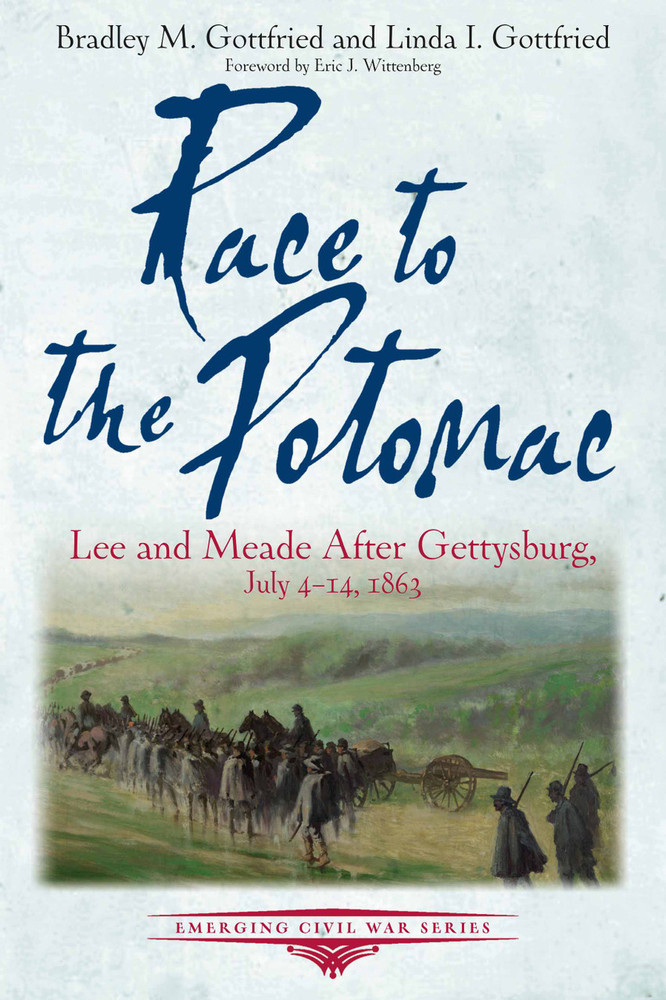Purchase your eBook here!
Click HERE to read the Front Matter and Chapter 1!
About the book
Even before the guns fell silent at Gettysburg, Robert E. Lee was preparing for the arduous task of getting his defeated army back safely into Virginia. It was an enormous, complex, and exceedingly dangerous undertaking, told here in exciting fashion by Bradley M. Gottfried and Linda I. Gottfried in Race to the Potomac: Lee and Meade after Gettysburg, July 4-14, 1863, the latest Emerging Civil War series entry.
General Lee’s first major decision was the assembly of two wagon trains, one to transport the wounded and the other to deliver the tons of supplies acquired by the army as it roamed across Pennsylvania and Maryland on the way to Gettysburg. Once the wagons trains were set, he mapped out routes for his infantry and artillery on different roads to speed the journey and protect his command.
Unsure of his opponent’s next move, George Meade, the victor of Gettysburg, dispatched Maj. Gen. John Sedgwick’s VI Corps on a reconnaissance-in-force. The thrust found the Confederate infantry in full retreat; Meade finally had the confirmation he needed that Lee was heading back to Virginia. Meade decided to launch a pursuit along different routes hoping to catch his beaten enemy without unduly exposing his own troops to a devastating counterattack or ambush.
Union cavalry moved out after the vulnerable Confederate wagon trains, and the encounters that followed, including several engagements with Jeb Stuart’s horsemen, resulted in the loss of hundreds of vehicles and the capture of large numbers of wounded and tons of valuable supplies. The majority of Lee’s wagons reached Williamsport, Maryland, only to find the pontoon bridge gone—cut loose by Union troops in the area. Lee’s army reached Hagerstown, Maryland, largely unscathed and began building a strong defensive line while a pontoon bridge was built across the Potomac at Falling Waters.
Bradley M. Gottfried served as a college educator for over 40 years before he retired in 2017. After receiving his doctorate, he was a full-time faculty member for eleven years and then entered the administrator ranks, rising to the position of president, serving for 17 years in this position at two colleges. His interest in the Civil War began when he was a youngster in the Philadelphia area. He has written 18 books on the Civil War, including a number on Gettysburg and map studies of various campaigns. A resident of the Chambersburg/Gettysburg, Pennsylvania area, Brad is an Antietam Licensed Battlefield Guide and a Gettysburg Licensed Town Guide.
Linda I. Gottfried served as a graphic designer and development officer at several colleges and nonprofit organizations before retiring in 2015. She is now a full-time sculptor. Several of her pieces have won awards. The Gottfrieds have four children and six grandchildren and live in Fayetteville, Pennsylvania.







